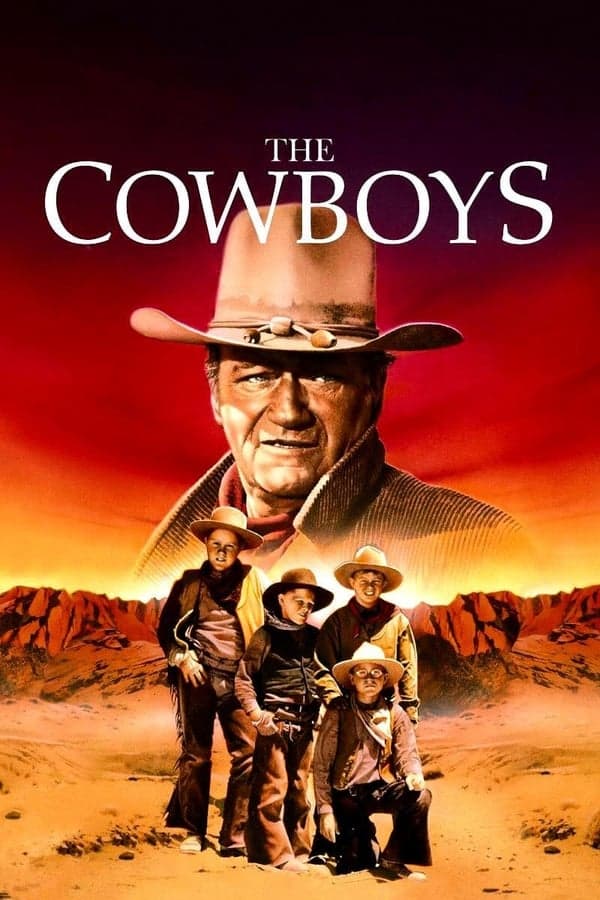
The Cowboys
1972 • Action, Adventure, Drama, Western • PG
When his cattlemen abandon him for the gold fields, rancher Wil Andersen is forced to take on a collection of young boys as his cowboys in order to get his herd to market in time to avoid financial disaster. The boys learn to do a man's job under Andersen's tutelage, however, neither he nor the boys know that a gang of cattle thieves is stalking them.
Runtime: 2h 14m
Why you should read the novel
William Dale Jennings' novel The Cowboys goes deeper than the film, offering rich, evocative prose that brings the Old West to life. The book provides a more complex emotional landscape as it follows the journey of a group of young boys led by the grizzled Wil Andersen. Readers are immersed in the boys’ thoughts, fears, motivations, and the transformation they undergo as they take on adult responsibilities well before their time.
If you’re looking to experience the characters’ personal growth and the hard moral choices they face, the novel is a must-read. Jennings crafts deeper backgrounds for the characters, making their struggles and victories more poignant than what is possible in a two-hour movie. The slower narrative pace allows you to truly feel the stakes of their dangerous cattle drive and the bonds formed along the way.
Choosing the novel over the movie grants you access to Jennings’ masterful descriptions, historical authenticity, and nuanced exploration of themes such as loss, courage, and coming-of-age. The Cowboys is not just a Western tale—it’s an experience that will stir your empathy and keep you thinking long after you turn the final page.
Adaptation differences
One significant difference between the novel and the movie adaptation is the level of psychological depth given to the characters. In the book, Jennings explores the inner struggles, hopes, and fears of the young cowboys more intimately, offering internal monologues and background stories that are largely absent from the film. The movie, constrained by its runtime, focuses more on external action and John Wayne’s portrayal of Wil Andersen, sometimes at the expense of the boys’ individual development.
The ending of The Cowboys also differs in its tone and resolution. The book presents a more nuanced and somber reflection on the consequences of violence and loss, emphasizing the emotional aftermath on the boys and the impact of Wil Andersen’s mentorship. In contrast, the film leans into a more dramatic, sometimes even vengeful, climax as the young cowboys exact justice, providing closure that feels more aligned with classic Hollywood Westerns than with the book’s introspective conclusion.
Another major difference is how the antagonist, Asa Watts, is characterized. Jennings’ novel provides more background and complexity to Watts, making him less of a traditional villain and more of a flawed, desperate man shaped by circumstance. The movie simplifies Watts into a more straightforwardly evil figure, which heightens dramatic tension but loses some of the subtlety found in the book.
Finally, the novel’s portrayal of frontier life is richer in detail and historical context, exploring the boys’ lack of experience and the real dangers they encounter. The hardships of the cattle drive, their moments of camaraderie, and their gradual transformation are given more time and attention. While the film captures some of this, the immersive, gritty realism and intimate journey provided by Jennings’ writing can only be fully appreciated by reading the original book.
The Cowboys inspired from
The Cowboys
by William Dale Jennings









